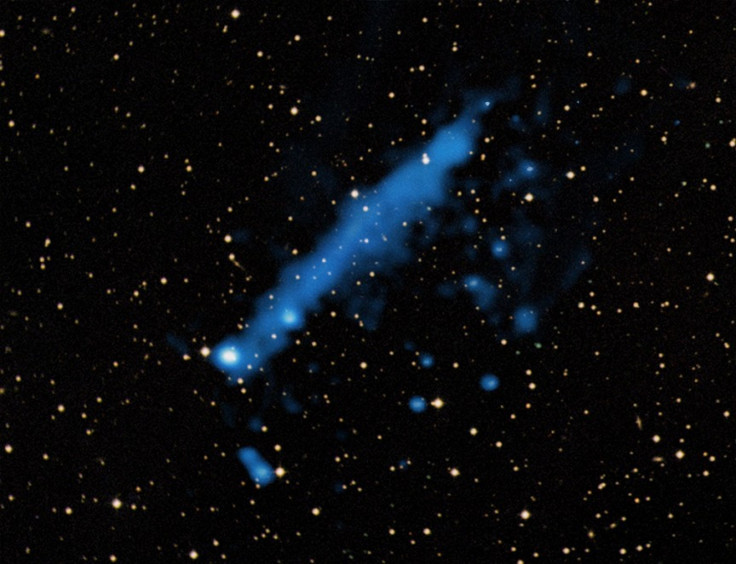Astronomers Find Spinning Neutron Star Tied to Mysterious Tail

A mysterious long X-ray tail spanning more than 4 light years across may be stretching away from a spinning neutron star, or pulsar, according to astronomers who discovered the event using NASA's Chandra X-ray Observatory.
The pulsar, named PSR J0357+3205, is located about 1,600 light years from Earth and was originally discovered by the Fermi Gamma Ray Space Telescope in 2009.
Astronomers calculate that the pulsar is about half a million years old, which makes it roughly middle-aged for this type of object.
Pulsars are highly magnetized, rotating neutron stars emitting a beam of electromagnetic radiation, which can only be observed when the beam of emission is pointing towards the Earth. This is called the lighthouse effect and gives rise to the pulsed nature that gives pulsars their name.
Neutron star, as its name implies composed almost entirely of neutrons, is a type of stellar remnant resulting from the gravitational collapse of a massive star during a supernova event.
The image shows NASA's Chandra data in blue and Digitized Sky Survey data in yellow. The position of the pulsar at the upper right end of the tail is seen by mousing over the image. The two bright sources lying near the lower left end of the tail are both thought to be unrelated background objects located outside our galaxy.
The interesting part in this discovery is the mysterious tail, which is stretching away from the pulsar. If the tail is at the same distance as the pulsar then it stretches for 4.2 light years in length, making it one of the longest X-ray tails ever associated with a so-called rotation-powered pulsar.
Rotation-powered pulsar is a class of pulsar that get its power from the energy lost as the rotation of the pulsar slows down.
Astronomers say that the tail is puzzling because despite sharing characteristics with other tails extending from pulsars, it differs in certain properties.
The Chandra data indicate that the X-ray tail may be produced by emission from energetic particles in a pulsar wind, with the particles produced by the pulsar spiraling around magnetic field lines.
Other X-ray tails around pulsars have been interpreted as bow-shocks generated by the supersonic motion of pulsars through space, with the wind trailing behind as its particles are swept back by the pulsar's interaction with the interstellar gas.
However, this bow-shock interpretation may or may not be correct for PSR J0357, with several issues that need to be explained. For instance, the Fermi data show that PSR J0357 is losing a very small amount of energy as its spin slows down with time.
Astronomers noted that this energy loss is important as it is converted into radiation and powering a particle wind from the pulsar. This places limits on the amount of energy that particles in the wind can attain, and so might not account for the quantity of X-rays seen by Chandra in the tail.
In addition, other pulsars with bow-shocks show bright X-ray emission surrounding the pulsar, and this is not seen for PSR J0357. Also, the brightest portion of the tail is well away from the pulsar and this differs from what has been seen for other pulsars with bow-shocks.
Astronomers hope that further observations could help test this bow-shock interpretation. If the pulsar is seen moving in the opposite direction from that of the tail, this would support the bow-shock idea.
© Copyright IBTimes 2025. All rights reserved.





















